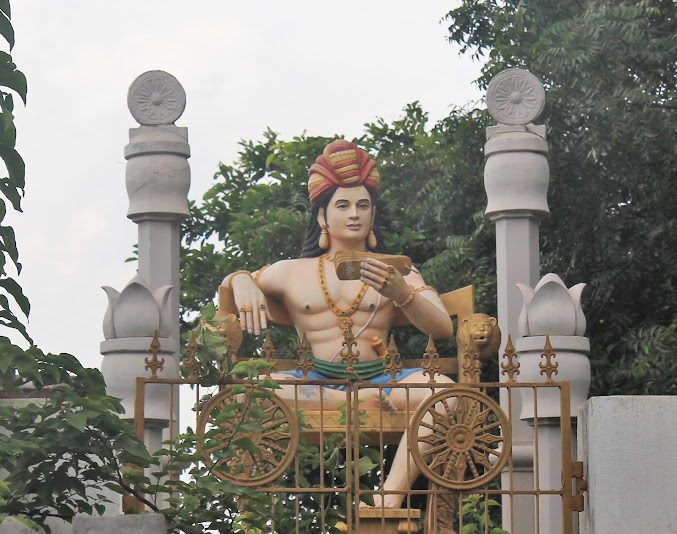However, the desire for control over the prosperous ports of the Western sea board – Bhṛgukaccha (Bharuch), Kalyāṇ and Śupāraka, which controlled the lucrative trade with the Roman and Hellenistic kingdoms – brought the Sātavāhanas in conflict with the Indo-Scythian provincial rulers or Śaka Kṣatraps who controlled large portions of Central & West India (present day Gujarat and Malwa). In the yearly years of the common era. Circa 15 – 40 CE large swathes of the Northern Deccan plateau and the Konkan coast were wrested by the powerful Śaka ruler Nahapāna, greatly reducing Sātavāhana territories.
However the new Sātavāhana king set about changing this state of affairs, assiduously consolidating his power till in his 18th regnal year, (78 CE), he comprehensively defeated the Śakas – by some accounts, Nahapāna died in battle – and not just regained the lost territory in North and coastal Maharashtra expanded into present day Saurashtra and Malwa. Triumphant rock inscriptions proclaim his new title – Tri-samudra-toya-pita-vahana – one whose steeds drank the water of three oceans – thus claiming overlordship over all of peninsular India.
This king named Gautamīputra Śatakarṇī – declared the year of his victory over the Śakas as the start of a new era – the Śaka Era – commencing on the first day of the month of Caitra. To this day, it is celebrated as the New Year’s day by people across the Deccan. Known as Gudhi Pāḍwā in Marathi and Ugādi in Telegu and Kannada.
Figure 1: Imagined likeness of Gautamiputra Satakarni, Amaravathi, Andhra Pradesh
The Sātavāhanas monarchs ushered an era of prosperity across the Deccan. Agriculture expanded, the kings commissioned the construction of reservoirs, patronised trade and commerce and expanded coinage. While the Sātavāhana rulers practiced the Vedic religion, having commissioned several sacrifices like the Ashwamedha and Rajasuya, they gave generous endowments to Buddhist and Jain monasteries. Some scholars conjecture that the Sātavāhana clan accorded high status to women, most of their monarchs bore matronyms – its is believed that the mother of the mighty king Gautamīputra Śatakarṇī, the Gautamī Bālaśṝi, was a capable woman who functioned as regent when her son was occupied with war, and during the early years of the reign of her grandson, Vāśiṣṭhīputra Pulavāmī.
On this day of Gudhi Pāḍwā / Ugādi – we would do well to remember these powerful Lords of the Deccan – Dakṣiṇāpathapatis.

No comments:
Post a Comment